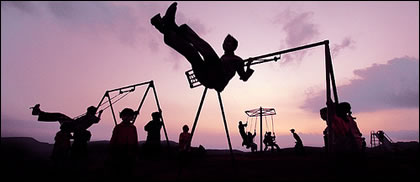Through play children learn and practice many basic social skills.
They develop a sense of self, learn to interact with other children, how to make friends, how to lie and how to role play.
Types of play
The first four types of play do not involve much interaction with others, while the last two do.
While children shift between the types of play, as they grew up, children participated less in the first four types of play and more in the last two – those which involved greater interaction.
- Unoccupied play: the child is relatively stationary and appears to be performing random movements with no apparent purpose. A relatively infrequent style of play.
- Solitary play: the child is completely engrossed in playing and does not seem to notice other children. Most often seen in children between 2 and 3 years-old.
- Onlooker play: child takes an interest in other children’s play but does not join in. May ask questions or just talk to other children, but the main activity is simply to watch.
- Parallel play: the child mimics other children’s play but doesn’t actively engage with them. For example they may use the same toy.
- Associative play: now more interested in each other than the toys they are using. This is the first category that involves strong social interaction between the children while they play.
- Cooperative play: some organisation enters children’s play, for example the playing has some goal and children often adopt roles and act as a group.
learning to play is learning how to relate to others
Source: 6 Types of Play: How Children’s Play Becomes More Social
